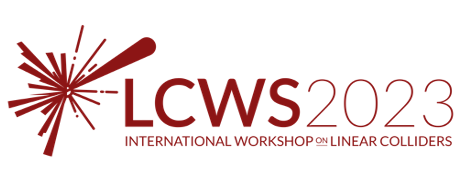Speaker
Description
Future Higgs factory experiments will require high precision in the jet reconstruction, particle identification and event tagging, all challenges which can addressed by ultra-granular calorimeters, associated with high-precision tracking and performant Particle Flow reconstruction. The technical issues of large ultra-granular calorimeters are numerous, and maximal for the electro-magnetic ones: a high density of channels calls for an embedded readout electronics, whose low power dissipation require either active cooling for continuous operation or passive one for pulsed operation. The Particle Flow approach is based on the unravelling of contributions from individual particle showers, hence having very compact ones, which is obtained by the use of low-profile electronics and Tungsten as absorber. The CALICE collaboration has developed many such prototypes, and the SiW–ECAL is the most advanced one. Recently, a 15-layer stack has been tested in beam at DESY with low-energy electrons, of 1 to 6 GeV and at CERN with high-energy electrons, 10 to 150 GeV as well as with pions and muons of the same energy. The tests included 4 different electronics designs. The performances obtained in the 2021 and 2022 campaign will be presented in this contribution. They allow for a critical review of the status of the SiW ECAL and give directions for future R&D.
The tests at CERN have been carried out in combination with the CALICE analogue hadron calorimeter (AHCAL). Experience combined running will be presented along with, if available, first results of combined data.



